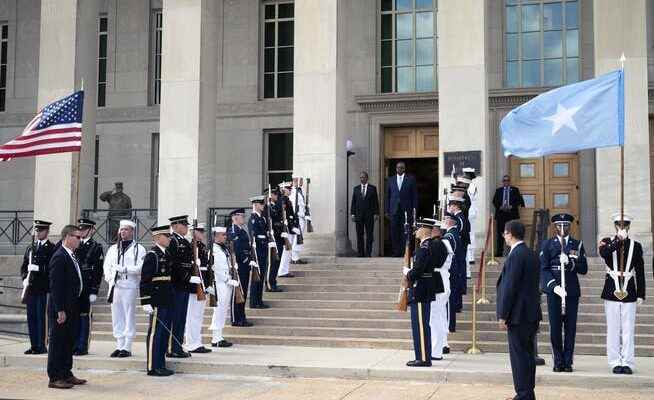According to the government, Somali forces killed 45 Islamists from the radical al-Shabab over the weekend. An attack was carried out by a US-trained Somali special unit. Al-Shabab on Sunday announced massive fighting against the government of President Hassan Sheikh Mohammed, who has been in office since May.
Secretary of Defense Lloyd Austin greets Somali President Hassan Sheikh Mohammed, left, during a ceremony at the Pentagon Thursday, September 15, 2022, in Washington.
(dpa)
The Somali armed forces have killed a further 45 Islamists from the radical al-Shabab in a contested part of the country, according to the government. The attack in Hiran province late Sunday evening was carried out by a US-trained Somali special forces unit. US drones were also used, as a senior military representative told the German Press Agency. According to the government, Somali soldiers already killed at least 30 fighters from the Islamist terrorist militia al-Shabab in the same province in the center of the country on Saturday. There had recently been increased fighting between soldiers and al-Shabab.
In another operation on Sunday in the south of the country, Somali troops killed nine Islamists. The government’s statements about the operations could not be independently verified.
The terrorist militia al-Shabab announced on Sunday massive fighting against the government of President Hassan Sheikh Mohammed, who has been in office since May. The Islamists called on civilians not to stay near government facilities and other places frequented by politicians, such as hotels. The extremists also showed videos on their propaganda platform with what they said were hundreds of newly recruited fighters.
Somalia, a country in the Horn of Africa with around 16 million inhabitants, has been rocked by attacks and violence for years. Al-Shabab controls large parts of the south of the country and the central regions. The terrorist group repeatedly carries out attacks on security forces and the civilian population.
